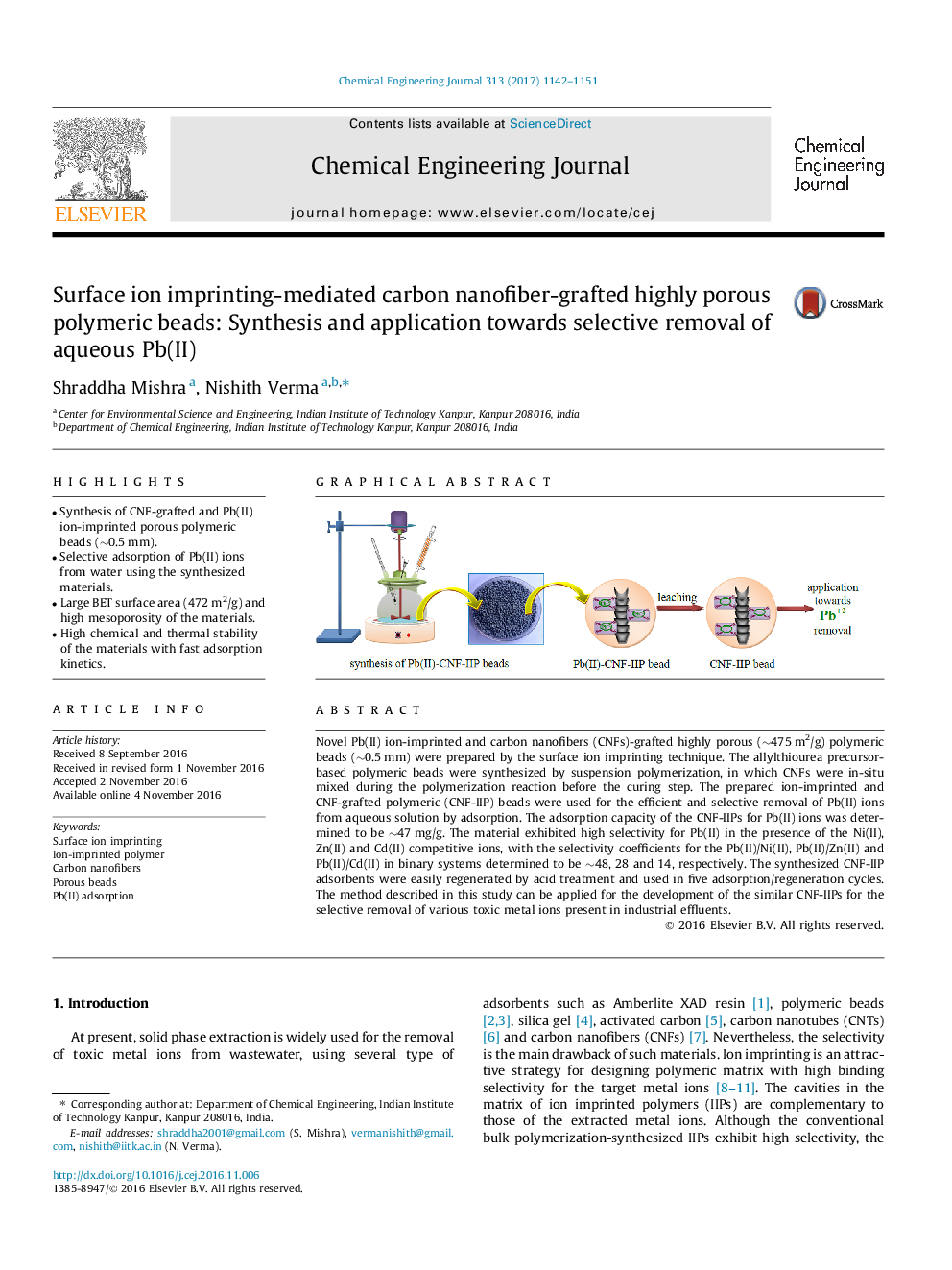| Article ID | Journal | Published Year | Pages | File Type |
|---|---|---|---|---|
| 6466680 | Chemical Engineering Journal | 2017 | 10 Pages |
â¢Synthesis of CNF-grafted and Pb(II) ion-imprinted porous polymeric beads (â¼0.5 mm).â¢Selective adsorption of Pb(II) ions from water using the synthesized materials.â¢Large BET surface area (472 m2/g) and high mesoporosity of the materials.â¢High chemical and thermal stability of the materials with fast adsorption kinetics.
Novel Pb(II) ion-imprinted and carbon nanofibers (CNFs)-grafted highly porous (â¼475Â m2/g) polymeric beads (â¼0.5Â mm) were prepared by the surface ion imprinting technique. The allylthiourea precursor-based polymeric beads were synthesized by suspension polymerization, in which CNFs were in-situ mixed during the polymerization reaction before the curing step. The prepared ion-imprinted and CNF-grafted polymeric (CNF-IIP) beads were used for the efficient and selective removal of Pb(II) ions from aqueous solution by adsorption. The adsorption capacity of the CNF-IIPs for Pb(II) ions was determined to be â¼47Â mg/g. The material exhibited high selectivity for Pb(II) in the presence of the Ni(II), Zn(II) and Cd(II) competitive ions, with the selectivity coefficients for the Pb(II)/Ni(II), Pb(II)/Zn(II) and Pb(II)/Cd(II) in binary systems determined to be â¼48, 28 and 14, respectively. The synthesized CNF-IIP adsorbents were easily regenerated by acid treatment and used in five adsorption/regeneration cycles. The method described in this study can be applied for the development of the similar CNF-IIPs for the selective removal of various toxic metal ions present in industrial effluents.
Graphical abstractDownload high-res image (75KB)Download full-size image
